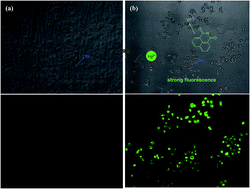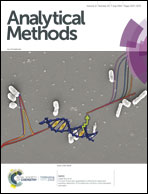A 1,8-naphthalimide-based fluorescent sensor with high selectivity and sensitivity for Hg2+ in aqueous solution and living cells†
Abstract
A new 4-amino-1,8-naphthalimide-based fluorescent sensor, with iminodiacetic acid and picolinic acid as receptors, was developed and applied successfully to detect Hg2+ in aqueous solution and living cells. It demonstrates high selectivity and sensitivity for sensing Hg2+ with about 25-fold enhancement with a characteristic emission band centered at 550 nm with a green color.



 Please wait while we load your content...
Please wait while we load your content...